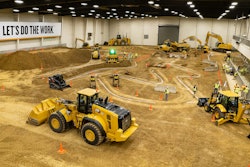
While the construction industry added 32,000 jobs in July, the fact remains that the industry’s labor supply remains severely constrained.
Analysis of federal data by both the Associated Builders and Contractors and the Associated General Contractors of America also indicated that unemployment in the sector fell to 3.5% as the number of unfilled construction positions continues to approach record levels.
U.S. employers added 528,000 jobs in July, twice the forecast of 250,000, and the unemployment rate across all industries fell to 3.5%, tied for the lowest rate since the 1960s.
For the month, nonresidential construction firms added 18,300 employees, increasing in all sectors, including 4,900 at general building contractors, 10,300 at nonresidential specialty trade contractors, and 3,100 at heavy and civil engineering construction firms. Employment in residential construction – homebuilders, multifamily general contractors and residential specialty trade contractors – increased by 14,100 between June and July.
On a year-over-year comparison, the construction industry has added 311,000 jobs, an increase of 4.2% between July 2021 and July 2022. The nonresidential sector added 190,800 of those yearly job gains, an increase of 4.4%. Meanwhile, residential construction firms added 120,800 jobs, an increase of 4%.
With the increase in jobs, the number of unemployed construction workers fell by 233,000, or 39%, to 359,000.
As with the numbers reported in June, the positivity suggested by this latest data has once again been put on hold by analysts from the two associations.
ABC Chief Economist Anirban Basu points out that while the job increases in June and July were indeed healthy, the impact of macroeconomic deterioration is already apparent in other data.
“To date, the residential segment has felt the brunt of rising borrowing costs, with mortgage applications recently declining to multidecade lows,” he said. “But ongoing weakness in certain commercial real estate segments, sky-high materials prices and shortages of skilled construction workers have forestalled a growing number of projects by suppressing demand at a time when the cost of delivering construction services remains elevated.”
The economy is not yet in recession, but his forecast still predicts one heading into 2023.
Also, AGC CEO Stephen E. Sandherr notes that as the number of unemployed construction workers declined, job openings in construction surged. He said there were 330,000 openings in construction at the end of June, which is the second-highest number of job openings for the month in the 22-year history of the construction industry job-opening series.
"Construction firms are doing their best to add new workers to keep pace with strong demand for construction," Sandherr said.
He noted that the job gains were welcome news but would have been higher if firms could find more workers to hire.
“It is time to start telling Americans there are multiple paths to success, and that one of those paths is a career in construction," Sandherr said. "Investing in infrastructure and chip plants is important, but investing in the people to build those facilities is essential."
Adding to the concern, Basu said, ABC’s Construction Backlog indicator fell 0.2 months in July and stands at 8.7 months. The reading remains 0.2 months up from July 2021.
“While backlog remains elevated from a year ago, this may have as much to do with the fact that projects are taking longer to complete than with underlying economic strength,” Basu said.
As the economy has become less supportive, he said, the level of construction has begun to fade.
“While the average contractor still expects employment and sales to climb over the next six months, the current pace of expansion is poised to be slower than earlier stages of economic recovery,” Basu said. “Higher borrowing costs, weak commercial real estate fundamentals and the reluctance of many project owners to bear the full brunt of higher construction materials prices and rising compensation costs are pushing profit margins lower and driving pessimism higher.”
Over the next six months, he said the average contractor expects margins to shrink.
“A growing number of contractors are preparing for tougher times ahead,” Basu said. “That is nothing new for an industry that has proven itself to be highly resilient and cyclical in recent decades. Nonetheless, for now, many contractors continue to operate at capacity and are actively looking to hire additional workers to expand capacity. It is simply too soon to conclude that the nonresidential construction industry has entered recession despite recent declines in backlog.”















